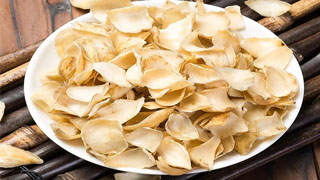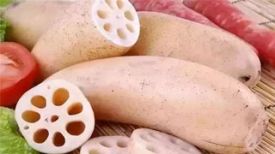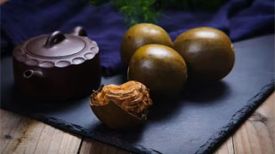
1. Alias
Chongmai, Lily Garlic, Garlic Potato.2. Plant morphology
Perennial herb; Height of 45-90 centimeters. The bulb is nearly spherical with a diameter of about 5 centimeters. The stem is upright and green. Leaves alternate, narrowly lanceolate or needle shaped, measuring 5-15 cm in length and 1-2 cm in width, with a pointed tip at the top. The leaves are entire and hairless on both sides. The flowers are white and extremely fragrant, with a slight green color on the outside. They are either single or arranged in an umbrella shape with 2-3 flowers; The flower stem is about 3 centimeters long; Huabei Pian 6, synthesized into a trumpet shape, 10-19 centimeters long, with no papillae on either side of the base nectaries; 6 stamens, filaments about 15 centimeters long, anthers oblong, dorsal, exposed; The style extends outward, the top is curved, the ovary is cylindrical, with 3 edges and 3 chambers, each chamber has a majority of endosperm, and the stigma is shallowly lobed. The capsule is oblong in shape, measuring 5-7 centimeters in length. The flowering period is from May to June; The fruiting period is from August to September.
3. Origin distribution
Mostly found on mountain slopes and grasslands. It is now cultivated in various parts of the country.
4. Harvesting and processing
In autumn, dig, wash, peel off scales and leaves, heat them slightly in boiling water, and dry them.
5. Characteristics of medicinal herbs
Elliptical in shape, 2-5 centimeters long, 1-2 centimeters wide, and 1.3-4 millimeters thick in the middle. The surface is white, light brownish yellow, or slightly purple, with several vertically parallel white vascular bundles. The top is slightly pointed, the base is wider, the edges are thin, microwave shaped, and slightly curled inward. Hard and brittle in texture, with a relatively flat cross-section and a keratinous appearance. Odorless, with a slightly bitter taste.
6. Sexual Taste Returning to the Classics
Cold in nature, sweet in taste. Returning to the Heart Meridian and Lung Meridian.
7. Effect and Function
Nourish yin, moisten lungs, clear the heart and calm the mind. It belongs to the category of tonifying yin medicines under the category of tonifying deficiency medicines.
8. Clinical application
Take 6-12 grams and decoct in water. Used to treat chronic cough caused by Yin deficiency, blood in phlegm, restlessness, palpitations, insomnia, and mental confusion. Individuals with wind cold cough, spleen and stomach deficiency cold, and constipation should avoid taking it.
9. Pharmacological research
Modern pharmacological experiments have shown that the decoction has a cough relieving effect on mice induced by ammonia water, increasing the pulmonary perfusion flow in mice. In addition, there are cough suppressants, asthma relievers, and expectorants; Anti stress injury; Sedative hypnosis; Enhance immune function; The effect of increasing peripheral white blood cells, etc.
10. Chemical composition
This product mainly contains Minjiang lily glycosides, deacetylated lily saponins, carotenoids, deacetylated lily saponins, lily saponins, β - Australian solanine, 1-O-p-coumaroyl glycerol, neonicotinoid saponins, etc.
11. Usage taboos
Individuals with wind cold cough and moderate cold loose stools are prohibited from taking it.
12. Compatibility prescription
① To treat persistent cough or blood in phlegm: divide into equal parts of winter flowers and lilies (roasted, steamed). Fine powder on top, refined into pills, as big as longan. Take one pill each time, chew it carefully before lying down, swallow the ginger soup, and let it dissolve in the water. (Continued Prescriptions for Jisheng: Baihua Cream)
② Treatment of Tianpao Damp Ulcers: Rub and apply fresh lilies for one or two days. (A Brief Introduction to Lake Collection)
③ To treat hearing loss and ear pain: dry lily powder, take 6 grams of warm water twice a day. (From "Qian Jin Yao Fang")
④ Treatment for neurasthenia, restlessness and insomnia: 15g lily, 15g sour jujube kernels, 9g yuanzhi. Boil it in water. (Handbook of Chinese Herbal Medicine in Xinjiang)
⑤ Treating lung abscess: Lily can be boiled or steamed, consumed frequently, and steamed with honey is better. ("Experience Collection" Lily Fry)
⊙ The content of the article is for clinical reference only. Non TCM professionals are not allowed to test drugs.


